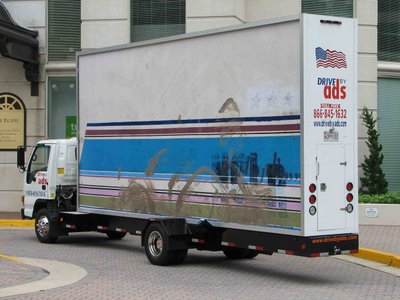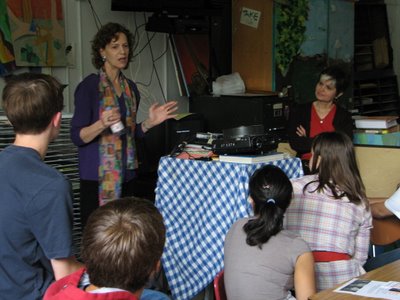 Susan Eder brought her experience as a working artist and teacher of fine art for eleven years in the New York and Massachusettes college systems, to the Yorktown classroom. Since 2001 Eder has collaboratively photographed unusual aspects of common subjects. By recording what is available to the attentive eye, her work expands upon the viewer's own everyday experiences.
Susan Eder brought her experience as a working artist and teacher of fine art for eleven years in the New York and Massachusettes college systems, to the Yorktown classroom. Since 2001 Eder has collaboratively photographed unusual aspects of common subjects. By recording what is available to the attentive eye, her work expands upon the viewer's own everyday experiences."It takes an extraordinary intelligence to contemplate the obvious"
-Alfred North Whitehead
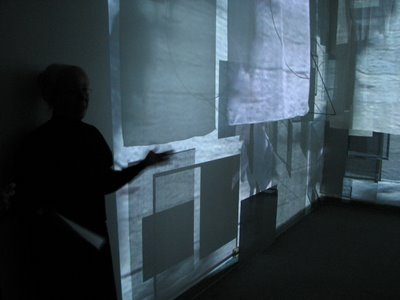 Renee Butler quotes Virginia Woolf to describe her piece Movement in B Flat. “Life is a Luminous Halo, a semi-transparent envelope surrounding us from the beginning of consciousness to the end.”
Renee Butler quotes Virginia Woolf to describe her piece Movement in B Flat. “Life is a Luminous Halo, a semi-transparent envelope surrounding us from the beginning of consciousness to the end.”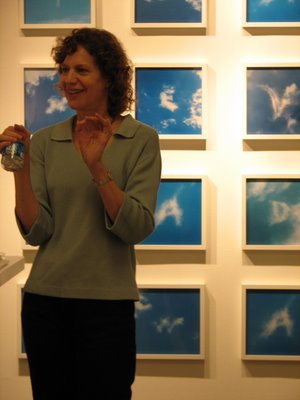 Susan Eder stands in front of her work Which Image Never Fades Away?, which was made in collaboration with artist Craig Dennis. These photographs of letter-shaped cloud formations "illustrate the universal human tendency to perceive meaning in abstract shapes."
Susan Eder stands in front of her work Which Image Never Fades Away?, which was made in collaboration with artist Craig Dennis. These photographs of letter-shaped cloud formations "illustrate the universal human tendency to perceive meaning in abstract shapes." Amy Glengary Yang's Phosphor series – cyanotypes mounted in lightboxes - stems from a “recent resurgence in both alternative photographic processes and figurative art… [She has] returned to processes that are created entirely by hand and require a labor-intensive methodology.” Yang states that, "Phosphorbox, in particular, also uses a human-scaled mirrored box to refract the lightbox glow in a way that multiplies and confuses the images, and supports an assemblage of totemic sculptural elements: an antique bell jar with pressure apparatus and a sea urchin skeleton lit with a neon element. The use of lightboxes also creates a juxtaposition between cyanotyping, an antique process that predates electricity, and fluorescent lights ---- an omnipresent and symbolically charged modern fixture. The drawn figures themselves are rendered using a contour technique. This hyper-emphasizes the flatness of the image in a way reminiscent of silkscreen or woodcut prints, postmodern anime-inspired art, and other forms of art that place an emphasis solely on the contour line."
Amy Glengary Yang's Phosphor series – cyanotypes mounted in lightboxes - stems from a “recent resurgence in both alternative photographic processes and figurative art… [She has] returned to processes that are created entirely by hand and require a labor-intensive methodology.” Yang states that, "Phosphorbox, in particular, also uses a human-scaled mirrored box to refract the lightbox glow in a way that multiplies and confuses the images, and supports an assemblage of totemic sculptural elements: an antique bell jar with pressure apparatus and a sea urchin skeleton lit with a neon element. The use of lightboxes also creates a juxtaposition between cyanotyping, an antique process that predates electricity, and fluorescent lights ---- an omnipresent and symbolically charged modern fixture. The drawn figures themselves are rendered using a contour technique. This hyper-emphasizes the flatness of the image in a way reminiscent of silkscreen or woodcut prints, postmodern anime-inspired art, and other forms of art that place an emphasis solely on the contour line."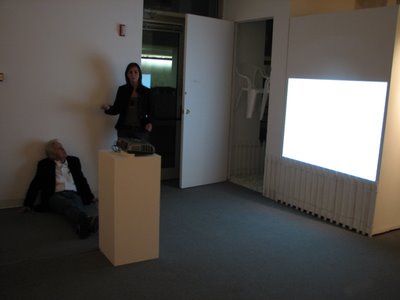 Kathryn Cornelius’ work responds to the spaces left between what is said and what is silent. She is concerned with addressing common, overlooked behaviors and collective emotional states that cross cultural boundaries and link individuals in ways that are outside the polarizing polemics of politics, ethnicity, race and class. To explore these themes, she extracts her material from the everyday and employs traditions of performance art, mixed with the methods and subversive agenda of conceptual art. Many of the works utilize repetitive examples of black humor and irony as devices to push perceived levels of comfort and open channels toward reflection and self-awareness. Through the use of video, photography, installation, sound, and sculpture, Cornelius aims to achieve a form through which the viewer can undergo a loss of time in the exploration of universal concepts hidden within the thin lines of purpose that attach us to histories, traditions, and social identities. The intention is to let go of the skin and surface, and slip into a state of challenging silence.
Kathryn Cornelius’ work responds to the spaces left between what is said and what is silent. She is concerned with addressing common, overlooked behaviors and collective emotional states that cross cultural boundaries and link individuals in ways that are outside the polarizing polemics of politics, ethnicity, race and class. To explore these themes, she extracts her material from the everyday and employs traditions of performance art, mixed with the methods and subversive agenda of conceptual art. Many of the works utilize repetitive examples of black humor and irony as devices to push perceived levels of comfort and open channels toward reflection and self-awareness. Through the use of video, photography, installation, sound, and sculpture, Cornelius aims to achieve a form through which the viewer can undergo a loss of time in the exploration of universal concepts hidden within the thin lines of purpose that attach us to histories, traditions, and social identities. The intention is to let go of the skin and surface, and slip into a state of challenging silence. M. Sedestrom Guthrie talks to the public about her photographic series Through the Glass. This body of work documents the graceful passage of time between a window washer and the artist at her day job.
M. Sedestrom Guthrie talks to the public about her photographic series Through the Glass. This body of work documents the graceful passage of time between a window washer and the artist at her day job.“Layers factor into Whitmore’s work in image and context. Inspired and informed by the language of art history, Whitmore creates a horizontal sense of movement by referencing paintings by Washington Color Field masters Morris Louis and Gene Davis. Over this imagery, he places such humorous representational imagery as an elephant and apple. Finally, he takes a mop of colors to the whole work.” -Nora Halpern, Art not Ads co-curator
Whitmore used mud as a medium on top of his billboard sized image.
As the sun set in Arlington County, the Street Scenes video truck prepared to launch into the metropolis. Video art by Colby Caldwell, Brandon Morse, Jose Ruiz and Conversions artist Kathryn Cornelius could be seen as the truck cruised around Arlington County on Friday evening.
“Brandon Morse’s digital work, non sequiter, 2006 (8 minutes) is a colorful play of movement, reminiscent of computer game images and film effects. Interested in work that is ‘situated somewhere between a specific narrative and a non-event,’ non sequiter moves through its sequence with one shape influencing the movement of the whole. As pedestrians and cars interact around the piece, the artwork will serve as a prism-like mirror to its city environs.” -Nora Halpern, Art not Ads co-curator

